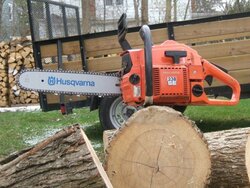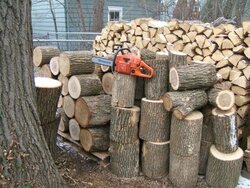Hubby and I have finally been looking seriously at gas chainsaws online and at the nearest dealer. We were surprised to find that within the same brand the chainsaws are not necessarily priced according to size. For example, with Husqvarna, the 346xp was priced at $440 at the local hardware/tool store, and a much bigger one, the 460 or 480 or something like that, bigger engine, bigger bar, was $400. Hubby found similar pricing differentials online. I had assumed that the bigger the saw, the bigger the price. Why is this not so, at least with various Husqvarna models?
I am guessing newer technology might play a part in this, and also special features. But still, adds another element of confusion to our decision making. We want something that can have at least an 18 inch bar, although would maybe use a 16 inch much of the time. Are leaning heavily to Husqvarna right now, just trying to narrow down the model. Hubby and I are both fast typing ex-computer professionals with hand problems, so low vibration is very important to us both. Although the darn gas chainsaws weigh so much I can't see myself using it at all, to tell the truth. I am fairly strong, but the carpal tunnel problems interfere with the whole clutching a vibrating object situation.
I am guessing newer technology might play a part in this, and also special features. But still, adds another element of confusion to our decision making. We want something that can have at least an 18 inch bar, although would maybe use a 16 inch much of the time. Are leaning heavily to Husqvarna right now, just trying to narrow down the model. Hubby and I are both fast typing ex-computer professionals with hand problems, so low vibration is very important to us both. Although the darn gas chainsaws weigh so much I can't see myself using it at all, to tell the truth. I am fairly strong, but the carpal tunnel problems interfere with the whole clutching a vibrating object situation.



